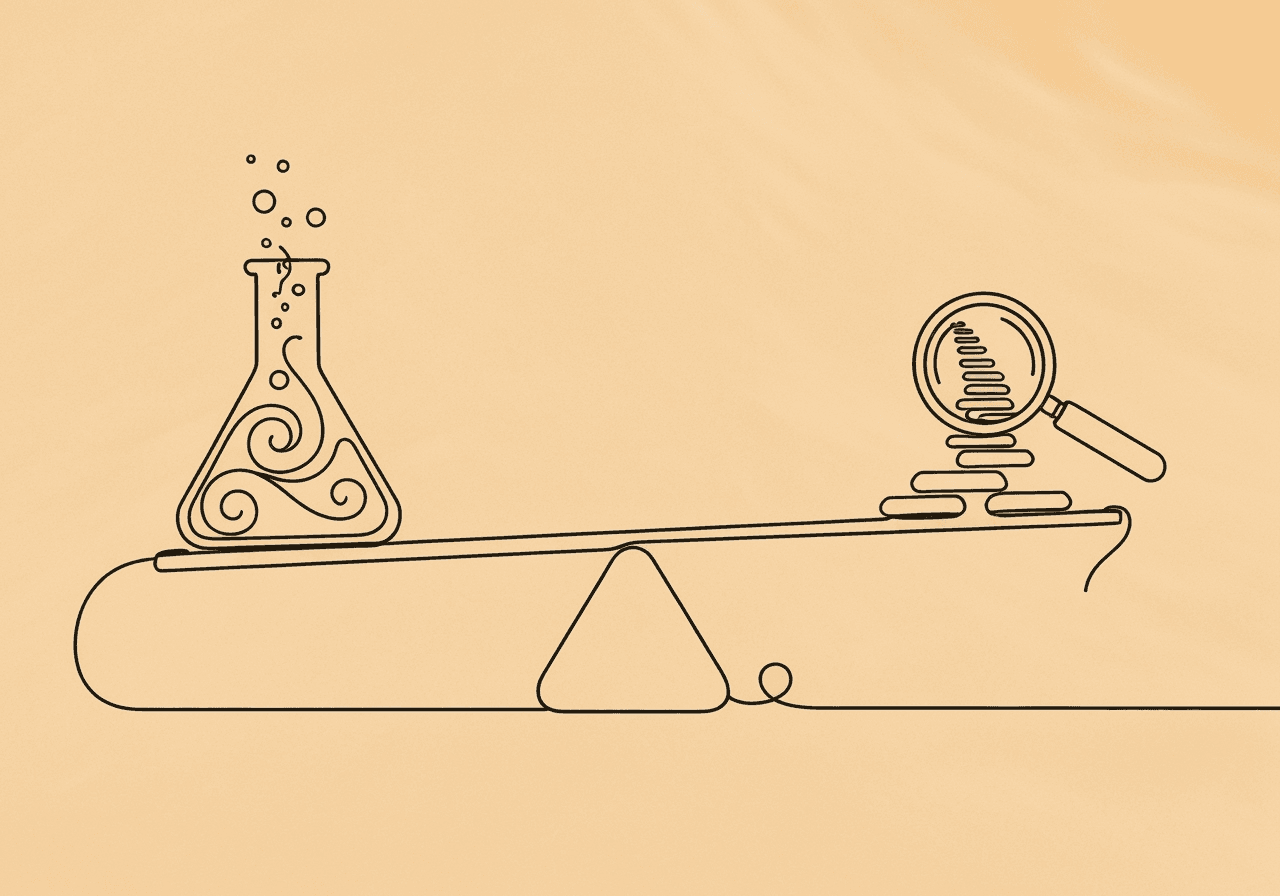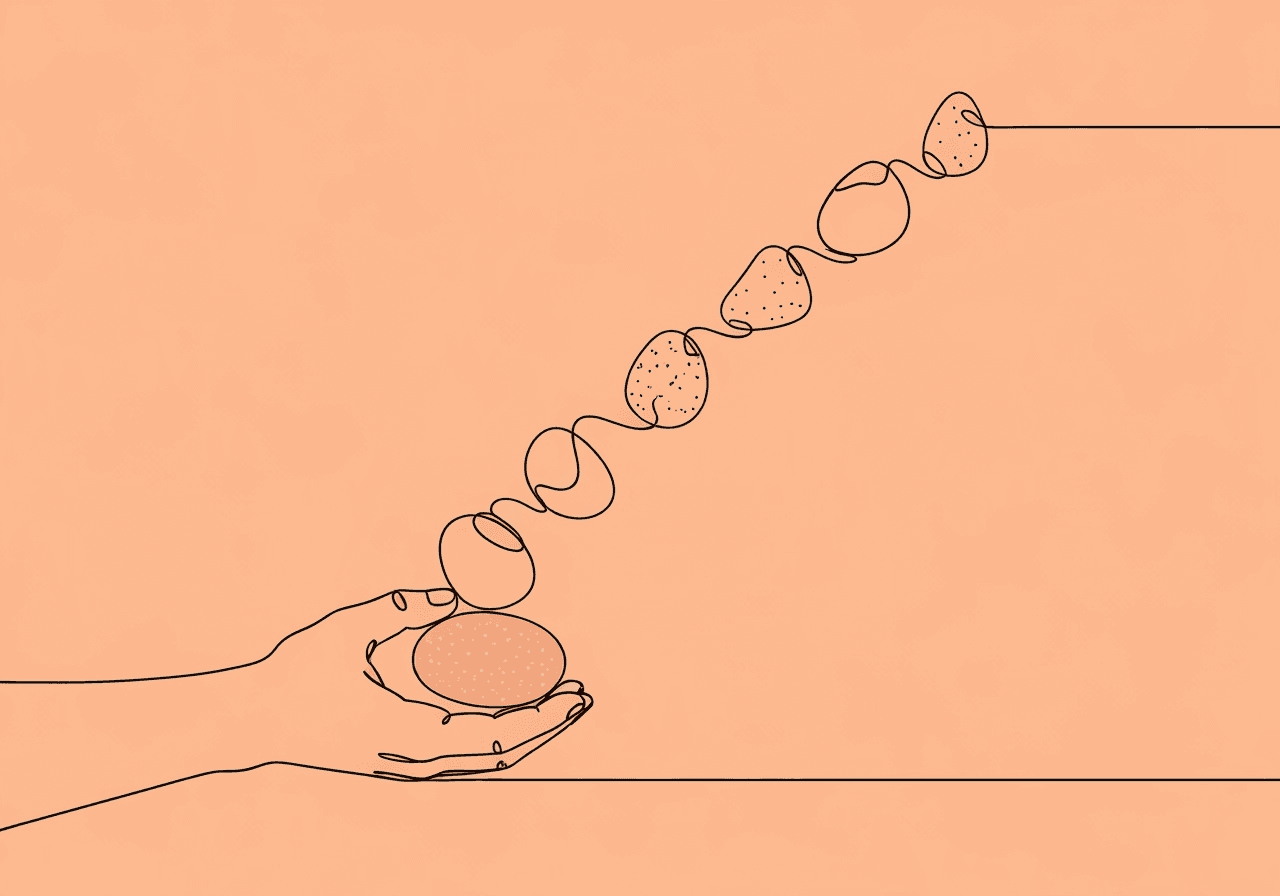Understanding Type I & II Errors in ABA: BCBA Exam Tips

In ABA, a fast-moving field where data decisions can make or break client progress, misinterpreting trends can lead to serious setbacks. Picture rolling out a Behavior Intervention Plan (BIP) that seems to work, only to find out later it didn't—or dropping a strategy that was actually helping. That's the challenge of Type I and Type II errors in ABA. These ideas test your stats smarts and ethical radar as a Board Certified Behavior Analyst (BCBA). For BCBA exam prep, nailing them helps you spot real changes and make solid calls in sessions.
This guide breaks down the basics, real-world BIP examples, and ways to cut risks. You'll see how these errors hit client goals and tie into BACB rules. You'll walk away with BCBA exam study strategies to own this topic, so your plans spark real gains.
Here are key takeaways to guide you:
- Type I errors mean false positives, like calling a BIP a win when it's not, wasting time on dud strategies.
- Type II errors are false negatives, missing true wins and ditching helpful tools too soon.
- Single-subject designs, like ABAB reversals, help spot real effects and dodge both pitfalls.
- Ethical docs demand clear limits on data reads to keep things honest per BACB codes.
- Exam tips: Practice graphing trends and linking errors to ethics for quick wins.
What Are Type I and Type II Errors in ABA?
Type I and Type II errors come from stats hypothesis testing. In ABA, they hit right at how you decide on interventions. The null hypothesis says no real change from your plan. The alternative means behavior shifts for real. A Type I error, or false positive, kicks in when you ditch the null wrongly. You think the intervention works when it flops. A Type II error, or false negative, happens when you stick with the null even though there's a true effect. You miss the win.
The ABA Study Guide (2023) calls these must-knows for single-subject research, ABA's backbone. In testing, Type I gets checked by alpha levels, like 0.05. Type II ties to sample size and effect strength. ABA uses one person's data, not groups. So, you adapt to visual checks and designs.
This setup stops you from jumping on fake trends. BCBAs balance risks to skip quick BIP tweaks. Interventions should match real shifts, not tricks of the eye.
How Do Type I Errors Show Up in ABA Treatment?
In ABA, a Type I error looks like blaming behavior shifts on your intervention when outside stuff or ups-and-downs cause it. This false positive can mess up paths by keeping bad plans alive. BehaviorPREP (2023) tags it as spotting a big effect that's not there, often from loose variables like room chaos.
Think of a BIP to cut tantrums in a kid with autism via differential reinforcement. Baseline logs high rates. Post-plan, rates ease a bit from a short-term schedule tweak, not the BIP. A BCBA scans graphs and calls it a success—a Type I error. This means logging fake wins, maybe dragging the plan out too long.
It links to false positives in ABA treatment, where fast calls pump up fake successes. The Scribbr resource on statistical errors (2024) says Type I eats at trust in results. BCBAs should repeat checks before owning effects. Exam questions love fuzzy graphs—drill single-subject setups to catch wiggles.
To fight this, set firm baselines with at least three data points as recommended in ABA guidelines.
Why Do Type II Errors Happen in ABA—and What’s the Cost?
A Type II error hits when your intervention really changes behavior, but you don't catch it. You tag the BIP as a bust. This false negative can scrap good strategies, slowing client steps. The Study Notes ABA glossary (2023) calls it saying a plan failed when it worked, usually from weak design power.
Say a BIP uses token economies to reward safe choices over self-injury. Small gains show, but baseline and intervention data overlap from brief phases. The BCBA sees no shift, makes a Type II error, and switches to weaker fixes. This drags out tough behaviors and skips skill chances.
It shows the swap: Tight rules cut Type I but boost Type II odds. In ABA, behaviors swing wild. You need sharp tools to catch them. For BCBA exam prep, lock in that power (1 - β) fights Type II with longer runs and tight definitions.
Real hits reach ethical docs, where skipping effects breaks client focus. False positives in ABA treatment add extra worry here.
How Can Single-Subject Designs Cut Type I and Type II Errors?
BCBAs fight Type I and Type II errors with tight single-subject experimental designs (SSEDs), ABA's top pick. Repeats rule: ABAB reversals pull the intervention to test if changes hold, trimming false positives from flukes. The ABA Study Guide (2023) pushes this for proving control.
Visual checks need set rules—level, trend, variability—to skip gut calls. Solid baselines plus fidelity scans up detection and cut Type II misses. Take multiple baseline designs: They roll out plans across behaviors in steps, dodging growth fakes that look like errors.
Add stats like Tau-U for overlap checks, mixing eye and numbers. The PMC article on single-subject designs (2014) advises sufficient data points (at least five per phase) to enhance reliability.
These fit BCBA exam strategies: Run mock designs on sample data to hunt errors. Fidelity checklists keep delivery steady—key for true reads. Try this in practice: Layer in repeats across a few behaviors to test if a trend holds or fades. Also, add in stats like Tau-U to back your visuals.
What’s the Hit to Clients and Ethics from These Errors in ABA?
Type I errors stretch out useless BIPs, draining client drive and funds. Type II errors block good supports, stunting skills. In ABA, gains link to personal targets. Errors widen gaps, hitting neurodiverse folks hard.
Ethically, the BACB Ethics Code for Behavior Analysts (2022) mandates reliable data evaluation (Section 2.17) and treatment adjustments based on evidence (2.18). Skipping error fixes can hurt, breaking care rules. Docs should flag design weak spots for real talk.
For example, a Type I in a BIP could mean billing for dud sessions, hitting integrity. BCBAs push back with steady checks and interobserver agreement (at least 80% reliability) in ABA. Without them, progress lags. But sticking to ethics makes interventions build real freedom.
In BCBA exam study strategies, tie these to case stories: See how errors twist reports and ethics snags.
Top BCBA Exam Study Strategies for Type I and Type II Errors in ABA
To own Type I and Type II errors in ABA, go targeted. Flashcard basics on errors and nulls first. Then hit SSEDs with BACB task list D-5 questions.
Mock visual reads in Excel to flag false positives in lines. Scan false positives in ABA treatment via quick peer notes. Team up in groups to hash cases, like a BIP with phase overlaps—Type II trap?
Carve time for ethics links: Match errors to BACB codes, quiz fixes. Use apps for spaced repeats, shoot for 90% hits. These BCBA exam study strategies turn stats into hands-on wins.
Frequently Asked Questions
How can BCBAs minimize Type I errors in single-subject designs?
BCBAs cut Type I errors with repeats in ABAB reversals to check effects and set visual rules to dodge gut feels. Firm baselines with extra data points split real shifts from noise. The ABA Study Guide (2023) says pairing these with fidelity scans drops false positive odds in ABA work.
What are real-world examples of Type II errors in ABA interventions?
A Type II error could hit when a token setup quietly cuts elopement, but quick phases hide the line, so the BIP gets dropped. This skips wins, per Study Notes ABA (2023), and may stretch safety issues for autistic clients.
How do Type I and Type II errors impact the validity of ABA research?
Type I pumps fake efficacy, hurting internal validity by pinning shifts on plans wrongly. Type II weakens power, skipping real effects and cutting spread. The Scribbr guide (2024) covers this balance, key for BCBA picks in ABA's proof base.
What strategies balance the risks of Type I and Type II errors in BIPs?
Tweak phase times for solid power, mix stats like effect sizes with visuals, and hit high interobserver agreement. PMC's single-subject review (2014) backs this full mix to catch well without swinging too far one way.
How does the BACB Ethics Code address Type I and Type II errors?
The code (2022) calls for evidence checks (2.17) and harm blocks via true data (1.04), hitting errors sideways with fidelity and tweaks. BCBAs log weak spots to keep trust, skipping breaches from bad calls.
Can visual analysis alone prevent false positives in ABA treatment?
Visuals aid but can go subjective; team with repeats and rules like steady trends for stronger blocks. BehaviorPREP (2023) pushes this blend to nail false positives in BIP checks.
Type I and Type II errors in ABA push BCBAs to mix stats sharpness with ethical care. They shape BIP wins and client paths. Focus on repeats, firm data, and BACB docs to guard gains and trim false positives or negatives. Sources like the ABA Study Guide show smart fixes boost plan strength.
Next: Drill SSED samples daily, check a fresh BIP for error spots, and hit the full BACB Ethics Code for real cases. Weave these into work with Praxis Notes tools for clean, true reports—fueling top ABA impact.
(Word count: 1,682)
Popular in Study Guides & Exam Prep
- 1
2025 RBT Competency Assessment Preparation Checklist
2,64510 min read - 2
RBT Task List A-01: Prepare for Data Collection — 7-Step Checklist
7956 min read - 3
Essential BCBA Supervision Contract Requirements
7609 min read - 4
BCBA Ethical Decision-Making Model: 8-Step Exam Guide
5688 min read - 5
RBT Exam Study Guide 2025: Complete Prep with Practice Questions & Tips
5608 min read
Popular in Study Guides & Exam Prep
- 1
2025 RBT Competency Assessment Preparation Checklist
2,64510 min read - 2
RBT Task List A-01: Prepare for Data Collection — 7-Step Checklist
7956 min read - 3
Essential BCBA Supervision Contract Requirements
7609 min read - 4
BCBA Ethical Decision-Making Model: 8-Step Exam Guide
5688 min read - 5
RBT Exam Study Guide 2025: Complete Prep with Practice Questions & Tips
5608 min read
Related Resources
Explore more helpful content on similar topics

BCBA Visual Analysis of Data: Exam Prep Essentials
Master BCBA visual analysis of data essentials for your exam. Discover how to interpret level, trend, and variability in ABA for functional relations. Ace your BCBA test with expert tips!

Inferential Statistics for ABA BCBA Exam Success
Master inferential statistics for ABA BCBA exam success. Explore visual analysis, t-tests, ANOVA, and BCBA research methods to enhance your statistical analysis skills and ace certification.

Philosophical Assumptions of ABA: Essential Guide for BCBAs
Explore philosophical assumptions of ABA essential for BCBAs. Discover determinism, empiricism, experimentation, replication, parsimony, and philosophic doubt with practical examples and a summary table.